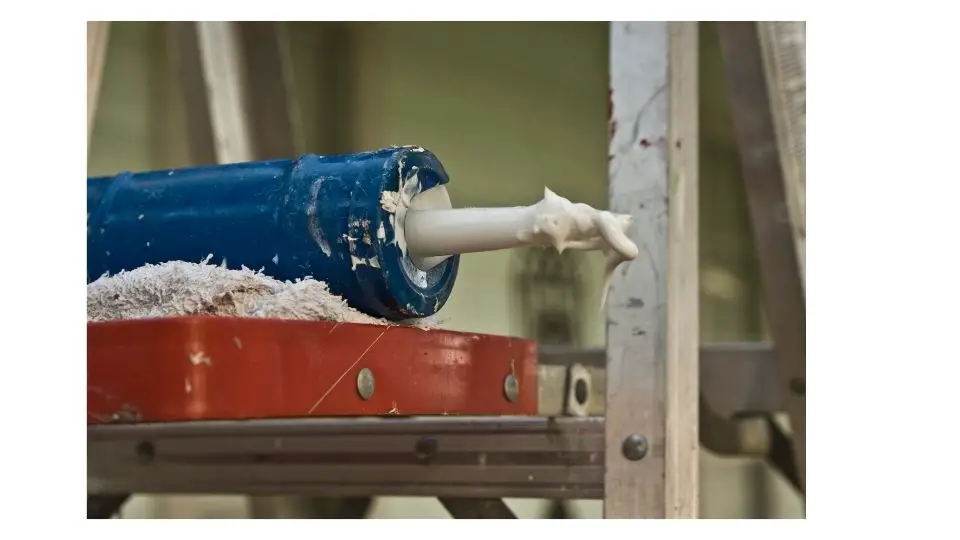One of the most common questions I normally get is should you caulk around a toilet? and this article aims to answer that for you.
It is advised to caulk around the base of your toilet to ensure it’s adequately anchored to the floor. Caulking around the toilet also prevents foul odor and gives the toilet a neat look since there will be no visible seam.
It is even part of the Uniform Plumbing Code requirement that homes should seal their toilet base with caulk. Despite this, whether toilets should be caulked on the floor is one of the debated topics in home improvement, with the main argument against it being about leak detection and ease in repairing.
The truth is that both side of the argument by professional plumbers have their respective valid points.
However, more personal views and leaving behind the facts and reasons won’t do any good, especially when installing the toilet yourself.
So, it is essential we nosedive into why it is imperative to caulk around your toilet, the argument against this, and whether or not it holds water.
We shall also look into the best and worst practices of caulking toilets and the best caulk to use around the toilet as recommended by our field experts. Now, the clear-cut answer to should I caulk around a toilet is a resounding yes. But why so? Let’s get cracking.
Why you should caulk around your toilet?
After going through many opinions by professionals and DIYs on popular plumbing forums, we have observed that the many arguments against caulking toilet base are somewhat erroneous.
You are doing yourself a lot better by caulking around the base of your toilet, and here is how:
Stops water from creeping under the toilet
With your toilet’s foot closed up with a quality caulk, liquid, often water, that has escaped from the bathtub or shower won’t flow under the toilet.
So, if your bathroom is vulnerable to flooding or sort, you can be sure that the likelihood of dealing with damage beneath your toilet is at the lowest.
Prevents unpleasant smell, improve aesthetics
The last thing you want is when mold or fungus begins to emanate under the bottom of the toilet, which can cause terrible odor over time.
A neat line of caulk sealing that area will prevent this and add an aesthetical finish just like in your around your tubs and bowls.
It is required in Plumbing codes
As mentioned earlier, modern buildings are required to caulk around their toilet by plumbing codes.
This should tell you the gravity of its importance. In addition, a section of the International Plumbing Code (2012 edition) equally points that t any joints involving fixtures should be sealed.
There are many other reasons why you should not think twice before caulking around your toilet during installation, including stability on uneven surfaces, risk reduction of a leak forming, among others.
Keep these in mind when caulking around your toilet
It is no new thing to go the DIY way when caulking your bathroom. However, this can end up messy if you do not keep in mind these Dos & Don’ts.
Go for the right caulk product for the toilet
This can not be overemphasized. In our years of fixing related bathroom problems, we’ve, at several times, discovered that many don’t know how to choose the right caulk which should be waterproof and formulated to prevent bacteria or mold.
Make the process easier with a quality caulk gun
With a quality caulk gun, which is relatively affordable, you’ll be able to moderately discharge the right amount of caulk for a neater result using the plunger and thumb pressure release.
This will save your time and effort, big time.
Remove existing caulking before applying a new one
Suppose you’re staying in an older home, or there is a need to recaulk your toilet/bathroom; ensure you apply new caulking after removing the old, cracked one using a durable caulk remover.
If you do otherwise, the sealing won’t be strong enough to resist water penetration over time. Other important Dos & Don’ts of caulking your toilet to the floor are presented in the table below:
Do’s
- Cut out the correct length for the tube before starting work
- Get your bathroom area ready before caulking the toilet.
- Use the correct technique to apply caulk or seek assistance.
Don’ts
- Don’t fill spaces larger than quarter-inch by half-inch with caulk alone. Use supporting materials
- Don’t allow water around the toilet area until the caulk has cured.
What happens if you don’t caulk the toilet?
One of the apparent results of not caulking your toilet is getting an unpleasant smell. Smelly mop water and water splashing from the shower creeps into under the toilet’s floor, and it could even give rise to bacteria and molds, which is an unhealthy problem.
In summary
Despite the heated argument on this divisive topic, the importance of caulking around the base of your toilet can not be overstressed. Nevertheless, the choice of caulking your toilet or not relies on your preference and local code enforcement. But ultimately, your toilet base should be caulked if the bathroom is prone to flooding and if the toilet is fixed on an uneven surface.

Arthur C. Jackson is the resident handyman and toilet expert for BestToiletGuides.com. Drawing from his experience, he tends to focus on how he can help the consumer.

